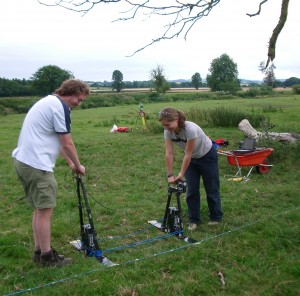Careers in environmental science are entirely unpredictable. You can make grand plans about where you might go and what you might do but the reality of life is that you have to respond to the opportunities that present themselves and do whatever seems exciting at the time. You may end up exactly where you started, but the journey can be simply sublime.
I did my PhD at the University of Reading where I spent almost four years looking at the effect earthworms had on metals in contaminated soils. Experiments basically entailed taking metal contaminated soil and comparing the chemistry of the soil before it gets eaten by the earthworm with the chemistry of what comes out the other end. During the first meeting I had with my PhD supervisor I was informed that he had been successful in securing ‘beamtime’ on a super-expensive instrument called a synchrotron in about a month’s time and that we needed to turn up with some contaminated worm poo in order to avoid major embarrassment. My first challenge was to find some contaminated soil. I was pointed in the direction of Devon Great Consols, a huge copper and arsenic mine on the banks of the river Tamar that was abandoned at the beginning of the 20th century. Upon arrival, the site looked like a moonscape with bumpy terrain consisting of various plies of pale yellow soil and a huge unvegetated spoil heap. The trick was to collect some soil that wasn’t so inhospitable that my earthworms would kick the bucket at a mere whiff but soil that would contain enough metals so that the synchrotron could detect it in the worm poo. This was a fine balance to strike but successfully achieved by hunting around for soils adjacent to the mine that already contained earthworms. If those earthworms could handle the elevated arsenic concentrations then surely the worms we had back in the lab would too. Fortunately the experiment was a success (perhaps more by luck than judgement) and that initial assessment made on my first day at Devon Great Consols served as a blueprint for subsequent field trips. I returned to the same spot on several occasions and adopted the same approach to sampling soils at other contaminated sites that I visited over the course of my years as a PhD student.
After my PhD I took the opportunity to spend a year in Nova Scotia, on the eastern coast of Canada. Why? Because the opportunity presented itself and it sounded like a fantastic place to spend a year. I was right. Nova Scotia is beautiful, everyone I met was ‘super awesome’ and the science was really exciting. Sandwiched between Nova Scotia and New Brunswick is the Bay of Fundy. The Bay of Fundy is home to the highest tidal amplitude in the world which gives rise to expansive mudflats that can stretch for more than a mile between the high and low tide mark. The bay is designated as internationally important due to its significance as feeding areas for long-distance migratory shorebirds. Every year the majority of the global population of one bird species (the Semipalmated Sandpiper: Calidris Pusilla) use the Bay of Fundy as a pit stop to eat shrimps and polychaete worms and build fat reserves before continuing their migration to South America. Because previous work had shown that some of the mudflats were contaminated with mercury and that the sandpipers were arriving in South America with elevated mercury loadings, we wanted to see if their Nova Scotian diet was contaminated. My task was to trudge out onto (or should I say into) the mudflats, collect sediment cores and extract invertebrates from the cores back at the lab. Sounds easy but the mudflats have the consistency of yesterday’s custard so just walking on (or should I say in) them is exhausting. This may seem like I’m stating the obvious but working on a mudflat results in you getting very muddy. Simple tasks like labelling samples or scratching your nose can result in getting mud in places that you never thought possible. The effort was worthwhile because we discovered that the polychaete worms contained much higher concentrations of mercury than the mud shrimp. We then went on to discover that the feeding ecology of the polychaete worms had a major impact on their mercury uptake.
Following my year in Nova Scotia (and a year in the US state of Iowa where I didn’t do any field work, so won’t go into it here), I had the fantastic opportunity to conduct fieldwork at what is probably the most famous and revered agricultural research station in the world: Rothamsted Research. Rothamsted is steeped in history and is most famous for the Broadbalk Experiment: the oldest continually running agricultural experiment in the world (which started in 1843). I was employed to look after a new suite of field experiments where we added various types of manure to plots of soil. The purpose was to see which type of manure, or which straw/ manure combinations were the best food for the organisms that live in the soil. The hope was that by adding the manure to the soil, the abundance of beneficial organisms such as earthworms and fungi would increase. We hypothesised that these organisms would then re-organise and improve the structure of the soil, reducing its strength. The improved soil would then be easier for plant roots to penetrate and we would see an increase in crop yield – and we did! Despite UK agriculture boasting some of the most technically advanced machinery in the world and Rothamsted being at the forefront of Agri-Environment research, it became quickly apparent that when an accurate quantity of manure needs to be applied to a precise plot of land, a man with a shovel is still be best tool for the job. For this reason, I spent my Septembers with a team from the farm engaging in the back-breaking pursuit of shovelling approximately sixty tonnes of manure into neat little piles on the back of a trailer and then applying them in buckets to the surface of more than 300 plots in the field. The experiments are still going and have already yielded some bumper data but I am happy to say that I have handed the shovel over to my successor.
Now that I have come full circle and am back at the University of Reading, a stone’s throw from the lab where I produced my first contaminated worm poo, I have one piece of advice: Don’t try to plan a career as an environmental scientist. Take the opportunities that present themselves, however mad or scary they may seem. The journey is much more important than the destination.
A bit about today’s blogger: Tom Sizmur
 Dr Tom Sizmur is a Lecturer in Environmental Chemistry at the University of Reading. His research interest spans soil biogeochemistry in contaminated and agricultural systems with an emphasis on the interactions between organisms and their environment. His current research is on the use of biochar in environmental remediation and on the improvement of soils by applying organic amendments. Prior to this appointment Tom worked as a postdoctoral researcher at Rothamsted Research (UK), Iowa State University (USA) and Acadia University (Canada) and gained his PhD from the University of Reading.
Dr Tom Sizmur is a Lecturer in Environmental Chemistry at the University of Reading. His research interest spans soil biogeochemistry in contaminated and agricultural systems with an emphasis on the interactions between organisms and their environment. His current research is on the use of biochar in environmental remediation and on the improvement of soils by applying organic amendments. Prior to this appointment Tom worked as a postdoctoral researcher at Rothamsted Research (UK), Iowa State University (USA) and Acadia University (Canada) and gained his PhD from the University of Reading.
Email: t.sizmur@reading.ac.uk





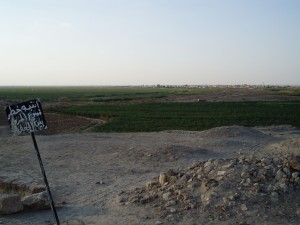




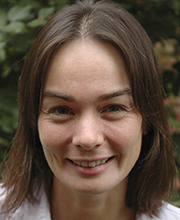



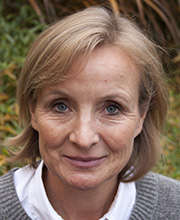





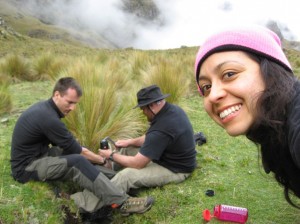





![JohnCarson_w[1]](https://blogs.reading.ac.uk/sages-advice-fieldwork-gender-careers/files/2015/01/JohnCarson_w1.jpg)
